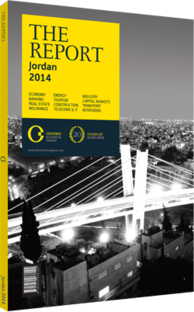OBG talks to Kjeld Binger, CEO, Airport International Group

Interivew: Kjeld Binger
What impact will Queen Alia International Airport (QAIA) upgrades have on the Jordanian aviation industry in the context of the wider region?
KJELD BINGER: Over the past 25 years, airport infrastructure throughout the world has gone through a paradigm shift, from state-backed projects to a stronger emphasis on privatisation, leading to higher levels of efficiency as well as greater profits.
While Jordan has a long aviation history, it presents us with an interesting case study. We have a national champion in Royal Jordanian, which has been in operation for five decades, but the country is no longer a hub for regional transportation. This reality means that we must operate within our means, and do the best we can within our constraints.
Indeed, it is important to note that we are currently nearing completion for the second phase of the new terminal. Along with the willing cooperation of the architects, investors and ourselves, we have successfully transformed QAIA into one of the leading airports in the world. It was only three decades ago that the original terminal was built. However, with ageing infrastructure and poor logistics, it was essential to proceed with a robust programme of modernisation and redevelopment.
Thanks to the modernisation of QAIA, we have a primary competitive advantage in the seamless transition of our transfers operations. We are a niche regional player and have been able to survive whatever competition exists by working on our partnerships between the operators and the airport. One important step to ensure long-term security was a deal struck back in 2009 with Boeing. Through this agreement, Royal Jordanian was able to acquire a fleet of Dreamliners for long-haul flights. This should help elevate Royal Jordanian’s status as a global airline player. Of course, this will by no means solve all of Royal Jordanian’s problems, as the carrier must continue to identify and target markets that will be able to accommodate a Dreamliner, and not only an A380.
How is the development of QAIA contributing to local employment and government revenues?
BINGER: There are currently approximately 400 employees at the Airport International Group. Of these, 395 are Jordanian, reflecting our wish to make this project a Jordanian-driven venture from the very beginning. From the construction side, it is slightly different, as the bulk of the workforce will be made up of guest workers. Therefore, in real terms, the entire project should inject approximately $1bn into the national economy, and have further benefits on long-term employment rates, by creating viable and sustainable linked industries.
We have a build-operate-transfer contract with the federal government that is scheduled to run for a period of 25 years. In return for this agreement, the government will receive 54.6% of the gross revenues that will be generated by the airport. Indeed, by the end of 2014, the government will have received an accumulated total of around $450m, which will constitute a substantial source of revenue. Thus, when the 25-year contract comes to a close, the government will take over the full operation of the airport, but it is also possible that they may launch a new tender for the management of the airport.
To what extent can the success of QAIA serve as a catalyst for infrastructure development?
BINGER: QAIA is not only responsible for spurring economic growth, but also driving development in the transport sector. Given the realities of increasing congestion, unpredictable winter weather conditions, and a lack of readily available winter tyres within Jordan, a parliamentary committee came to the airport recently to discuss plans to build a train network to and from Amman. There are also serious talks under way regarding the construction of a train line between Amman, Aqaba and cities within Egypt. The synergies to be realised through this intermodality are exciting, and will help to boost the economy.
You have reached the limit of premium articles you can view for free.
Choose from the options below to purchase print or digital editions of our Reports. You can also purchase a website subscription giving you unlimited access to all of our Reports online for 12 months.
If you have already purchased this Report or have a website subscription, please login to continue.

